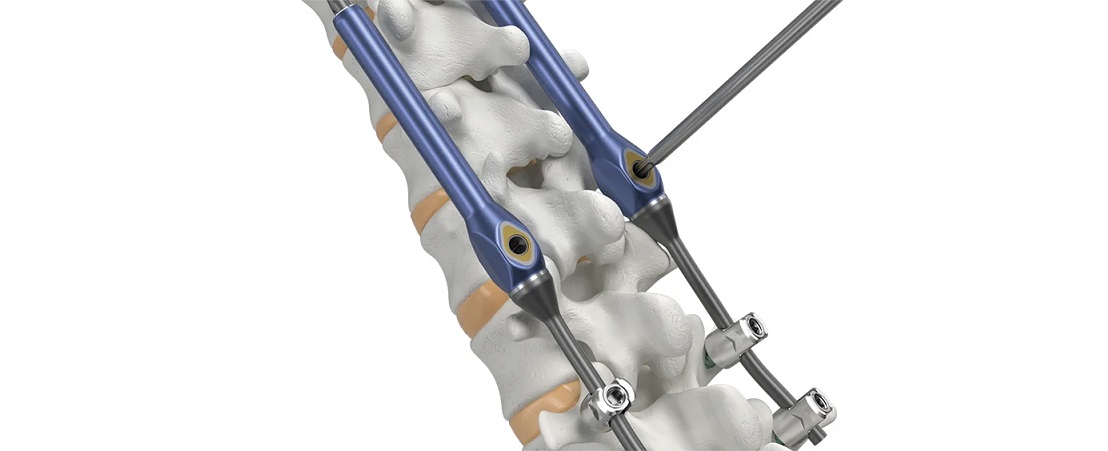July 28, 2023 /OrthoSpineNews/ –
New clinical data using the Reverse Hip Replacement System (Reverse HRS) were published in a recent article in the Bone and Joint Journal Open (https://doi.org/10.1302/2633-1462.45.BJO-2023-0018.R1) entitled, “Radiostereometric analysis and clinical outcomes of a novel reverse total hip system at two years.”
The purpose of this study was to assess the implant fixation using radiostereometric analysis (RSA), and the clinical safety and efficacy of this novel Reverse HRS design. The study enrolled 22 patients (11 male/11 female; median age 70.6 years) and evaluated implant fixation using radiostereometric analysis (RSA). RSA is a well validated technique used to predict long-term implant stability by studying the implants’ early behavior.
RSA markers were viewed via radiologic imaging at six weeks (baseline) and 6, 12, and 24 months. Mean acetabular subsidence from baseline to 24 months was 0.087 mm (SD 0.152), below the critical threshold of 0.2 mm (p = 0.005). Mean femoral subsidence from baseline to 24 months was -0.002 mm (SD 0.194), below the published reference of 0.5 mm (p < 0.001).
Results with the Reverse HRS demonstrate excellent fixation with a predicted low risk of revision at ten years. Study results also demonstrated mean migration below the level of radiostereometric analysis (RSA) detection for both the femoral and acetabular components, and high rates of patient satisfaction including no patients reporting symptoms consistent with soft-tissue impingement within the articulation and no symptoms consistent with adverse reaction to metal debris.
“These data demonstrate that the Reverse Hip Replacement System delivers excellent fixation with a predicted low risk of revision for loosening at ten years post-surgery,” said Thomas Turgeon, MD, Director of Arthroplasty Research, Concordia Hip and Knee Institute, Associate Professor, University of Manitoba Site Head of Surgery, Concordia General Hospital, and lead study investigator.
The Reverse HRS is a Metal-on-Polyethylene reverse geometry hip prosthesis designed to improve stability at extended ranges of motion and reduce the risk of dislocation. Like most conventional systems, the Reverse HRS consists of a femoral stem, an acetabular cup and a cobalt-chrome ball that articulates within a polyethylene liner. Unlike existing total hip replacement systems, the ball is placed on a trunnion within the acetabular cup instead of the femoral stem, and the polyethylene liner is attached to a femoral cup, which then attaches to the femoral stem, as opposed to the polyethylene liner being attached to the acetabular cup.
This technological difference does not change the center of rotation of the Reverse HRS and it remains similar to a normal physiological hip, or a well-positioned traditional Total Hip Arthroplasty. The advanced Reverse HRS implant is designed to provide greater range of motion in all planes, enhanced hip stability, and to reduce the risk of dislocation. Importantly, the Reverse HRS also provides variability of component placement including higher abduction angles and anteversion of the acetabular cup. The femoral cup articulates around the acetabular ball and overlaps with the acetabular cup as the hip undergoes flexion-extension, abduction-adduction and internal-external rotation.
This forgiving design may compensate for suboptimal component positioning which may provide benefits such as extended range of motion, hip stability and reduced likelihood of impingement. The Reverse HRS is designed to uncouple the relationship between component placement, wear and stability. This unique implant design of the Reverse HRS provides optimal surface area contact between the acetabular ball and femoral cup, which may eliminate edge loading. Elimination of edge loading may provide benefits that include reduced high-contact stresses, decreased implant wear and uniform wear, which minimizes generation of wear debris and associated concerns related to osteolysis.
Hip replacement surgery, or total hip arthroplasty, is one of the most common joint replacement procedures done in the United States. According to the Agency for Healthcare Research and Quality, more than 450,000 total hip replacements are performed each year in the United States. In fact, by 2030 approximately 850,000 patients are expected to undergo the procedure each year. Total hip replacements are one of the most effective ways to reduce joint pain and improve functioning for patients with advanced hip problems. During the 2015 calendar year, approximately 324,000 surgeries were performed in the U.S. and 50,000 in Canada.
The aging of the global population, along with other variables, such as osteoarthritis, obesity, Rheumatoid arthritis, Osteonecrosis, and hip fracture, among other things, is contributing to the increasing need for total hip arthroplasty.
Thomas Turgeon, BSc MD MPH FRCSC FAAOS
Director of Arthroplasty Research, Concordia Hip and Knee Institute
Associate Professor, University of Manitoba
Site Head of Surgery, Concordia General Hospital
tturgeon@cjrg.ca







